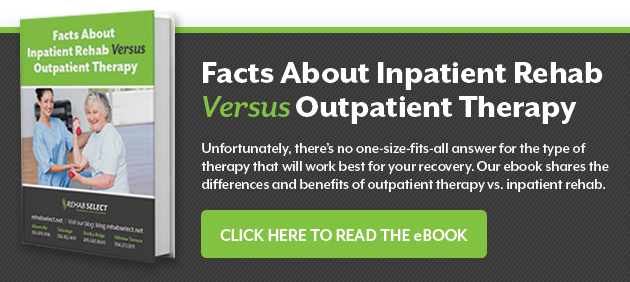 Physical therapy is often incorporated into your outpatient treatment plan if an injury or surgical procedure leaves you with mobility limitations. Your therapist works closely with you and your care team to improve your recovery.
Physical therapy is often incorporated into your outpatient treatment plan if an injury or surgical procedure leaves you with mobility limitations. Your therapist works closely with you and your care team to improve your recovery.
To get the most out of your sessions, it helps to understand how physical therapy works and the benefits it offers.
What are the Benefits of Physical Therapy?
The purpose of physical therapy is to help you rehabilitate from an illness or injury and perform your everyday activities to the best of your ability. Your physical therapist knows how to safely adapt your therapy around your injuries, health conditions, and limitations, to prevent the risk of doing more harm than good.
Outpatient physical therapy also helps:
- Reduce pain and resultant opioid use
- Prevent postoperative blood clots
- Restore ability
- Prevent injury
- Manage chronic disease
- Promote an active lifestyle
You may be able to kickstart the recovery process by beginning physical therapy before you have surgery. Studies show “prehab” is beneficial for joint replacement surgery, back surgery, rotator cuff tears, meniscal tears, and knee osteoarthritis.
In some cases, physical therapy can help you avoid surgery in the first place. Men and women often see the same significant improvements after long-term physical therapy as they would with surgery, saving them the expense and risks involved in the operating room.
How Does Physical Therapy Achieve These Results?
During physical therapy sessions, your provider has you move through a series of targeted exercises. They may also incorporate manual, heat/cold, electric, or ultrasound therapies to help you achieve your treatment goals.
Then, your therapist sends you home with custom-tailored exercises to practice in between appointments. This homework accelerates your progress by building upon the work you do in your sessions.
Resistance exercises increase your strength and guided stretches increase your range of motion. Corrective exercises help even out any muscle imbalances or weaknesses you might have. Each session progressively increases your:
- Stability
- Strength
- Mobility
- Stamina
- Flexibility
- Reflexes
You may notice how your balance on stairs improves or your grocery bags become easier to carry over the course of several weeks. Counterproductive as it may seem, physical exertion can actually lower the incidence of fatigue by giving you more energy.
You may also be surprised by the amount of pain relief you can get from physical therapy. If you’re like the 79% of patients who would rather treat their post-surgical pain with drug-free techniques rather than opioids, physical therapy is an effective option. The manual and physical techniques encourage the healing process and often reduce the inflammation, nerve pressure, and stiffness associated with pain.
As you incorporate physical activity into your routine, you may also benefit from lower blood sugar levels, increased circulation, improved aerobic capacity, and decreased joint pressure. That’s great news if you have a chronic condition that affects your musculoskeletal or circulatory systems like diabetes, congestive heart failure, or arthritis.
In addition, if obesity complicates your condition, your physical therapist can help you fight its effects during your sessions. If you lose excess weight during your treatment, you may experience reduced pressure on your bones and joints and find you’re able to move around better than you could before.
Your therapist can also work on proper posture, ergonomics, and self-management to help prevent problems in the future and provide assistive devices to help preserve your independence.
How Does Physical Therapy Fit Into My Treatment Plan?
As you’re recovering from a medical incident, you’ll want to regain your full capabilities, whether that’s running a sub-10-minute mile or being able to make your own meals at home. Your therapist helps you define realistic treatment goals and uses physical therapy to support those outcomes.
Physical therapy also complements the other treatments in your comprehensive care plan. Your therapist takes a collaborative approach for treatment and builds upon the work you do with your doctor, surgeon, and other therapists.
Each treatment modality reinforces the other and creates a healthy snowball effect. You may be able to recover faster, return to the best of your ability, and enjoy improved health as a result.
When you follow your personalized treatment plan, outpatient physical therapy will make a significant difference in your recovery. The professionals at Rehab Select are ready to assist you in your recovery, so call the number at the top of this page or click here to begin the intake process.





